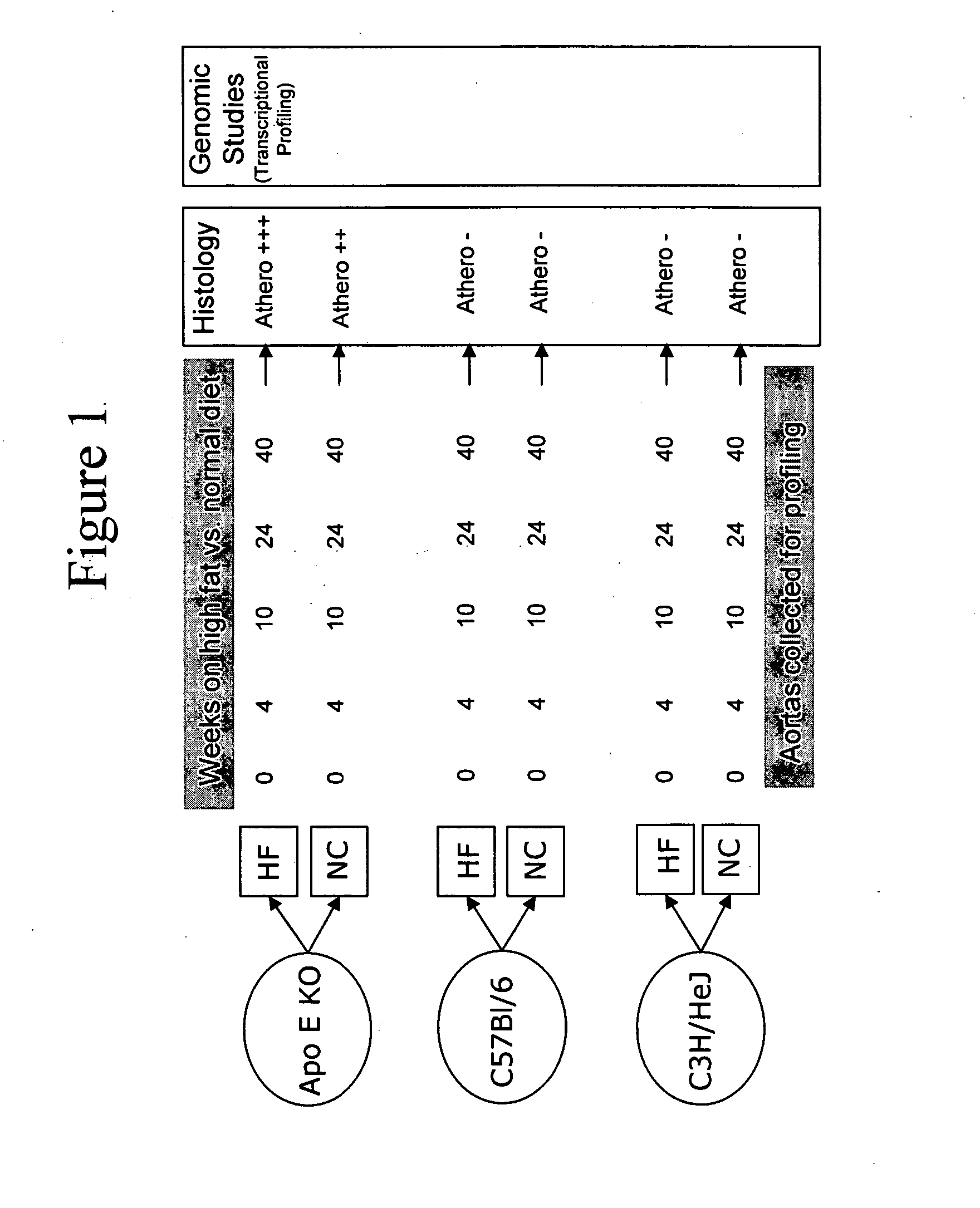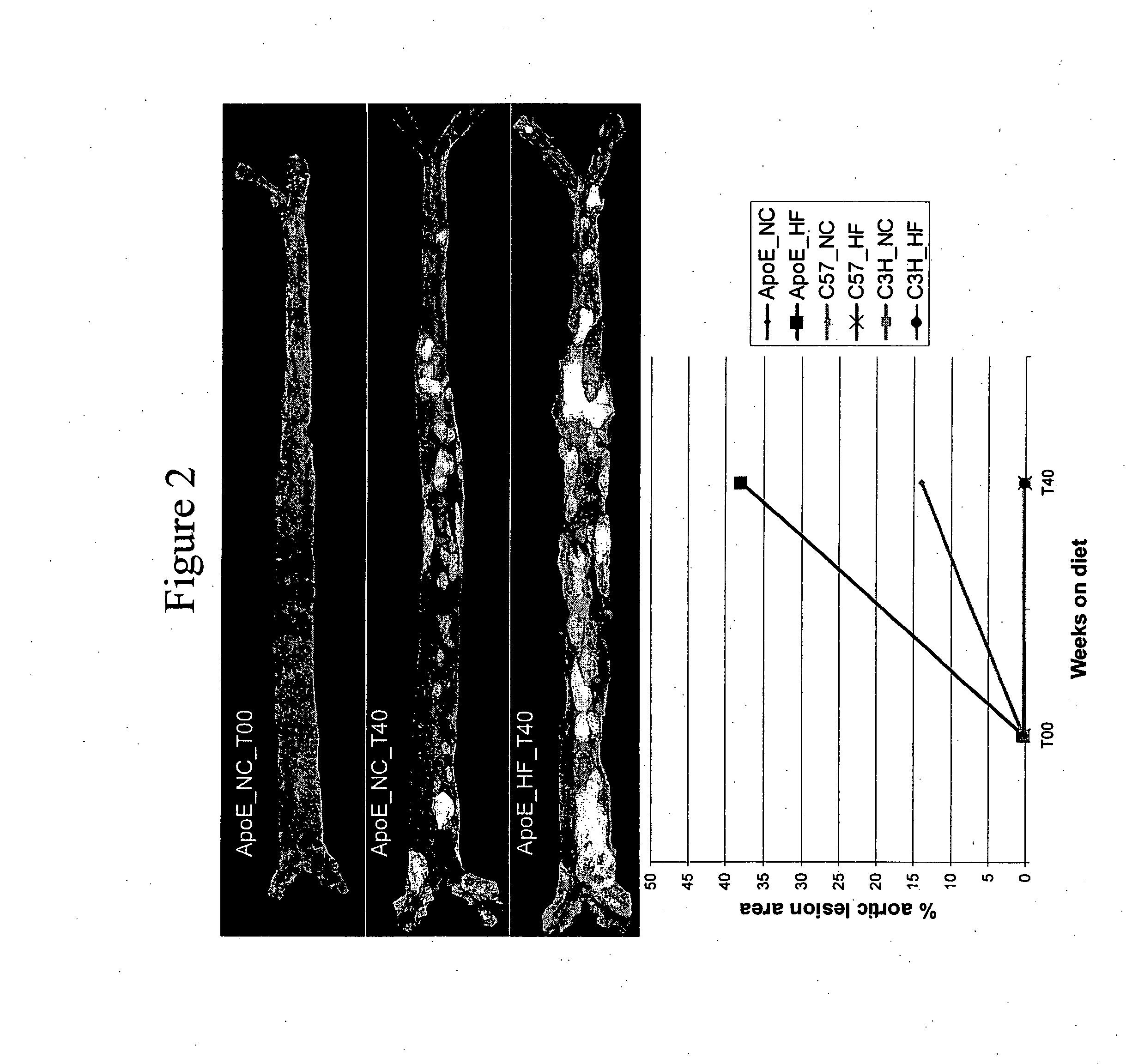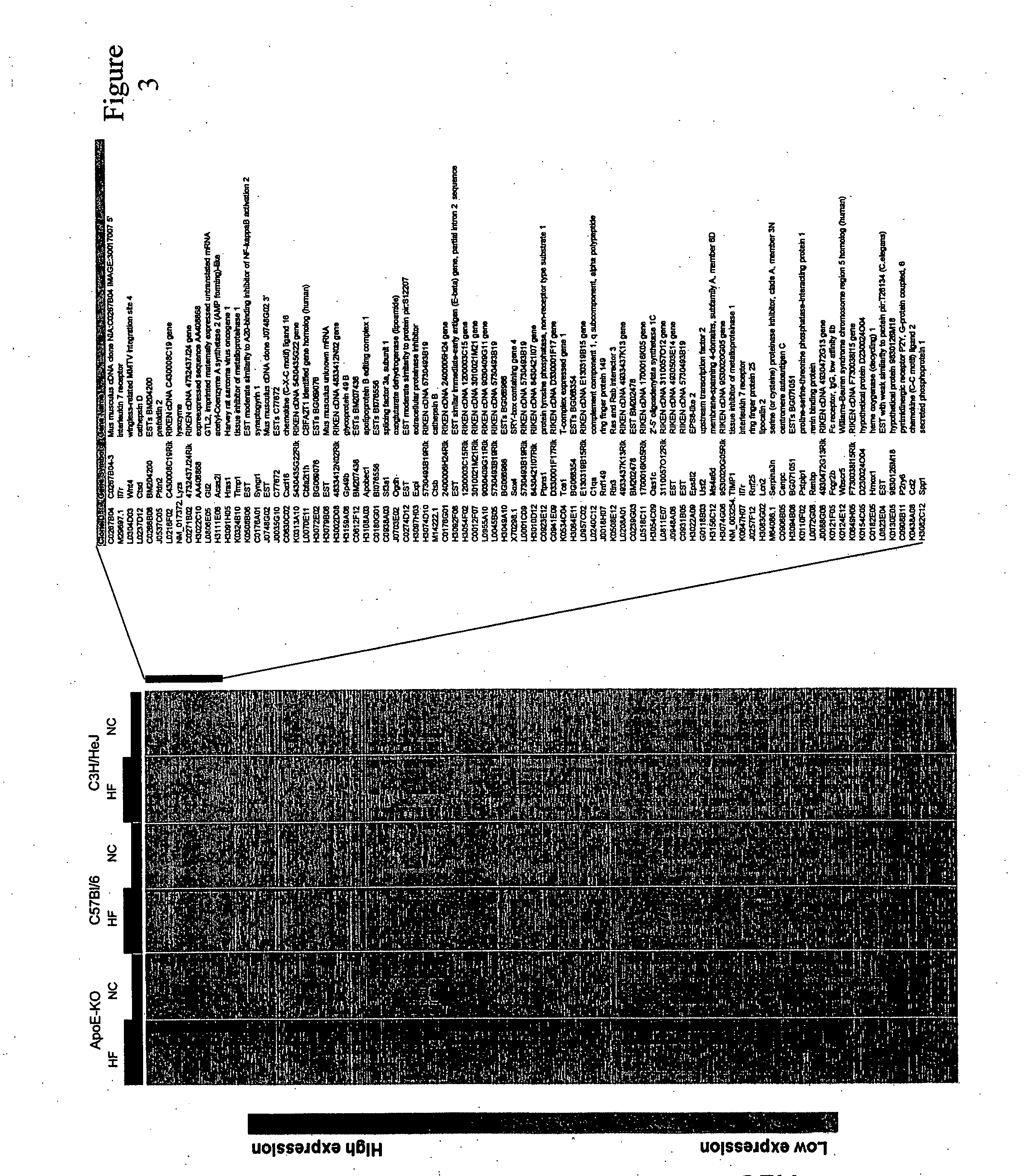Methods and compositions for diagnosis, monitoring and development of therapeutics for treatment of atherosclerotic disease
a technology for atherosclerosis and therapeutics, applied in the field of atherosclerosis, can solve the problems of limited knowledge regarding temporal gene expression during the course of disease progression, and limited systematic temporal gene expression studies in humans
- Summary
- Abstract
- Description
- Claims
- Application Information
AI Technical Summary
Benefits of technology
Problems solved by technology
Method used
Image
Examples
example 1
Signature Patterns of Gene Expression in Mouse Atherosclerosis and their Correlation to Human Coronary Disease
[0145] Mouse genetic models of atherosclerosis allow systematic analysis of gene expression, and provide a good representation of the human disease process (Breslow (1996) Science 272: 685-688). ApoE-deficient mice predictably develop spontaneous atherosclerotic plaques with numerous features similar to human lesions (Nakashima et al. (1994) Arterioscler Thromb 14: 133-140; Napoli et al. (2000) Nutr Metab Cardiovasc Dis 10: 209-215; Reddick et al. (1994) Arterioscler Thromb 14: 141-147. On a high-fat diet, the rate and extent of progression of lesions are accelerated. In addition to environmental influences such as diet, the genetic background of mice has also been found to have an important role in disease development and progression. Whereas C57B1 / 6 (C57) mice are susceptible to developing atherosclerosis, the C3H / HeJ (C3H) strain of mice is resistant (Grimsditch et al. (...
example 2
Mouse Strain—Specific Differences in Vascular Wall Gene Expression and Their Relationship to Vascular Disease
Methods
RNA Preparation and Hybridization to the Microarray
[0185] Three-week old female C3H / HeJ, C57B1 / 6J, and apoE knock-out mice (C57BL / 6J-ApoetmlUnc) were purchased from Jackson Labs (JAX® Mice and Services, Bar Harbor, Me.). At four weeks of age the mice were either continued on normal chow or switched to non-cholate containing high-fat diet which included 21% anhydrous milkfat and 0.15% cholesterol (Dyets #101511, Dyets Inc., Bethlehem, Pa.) for a maximum period of 40 weeks. At each of the time-points, including 0 (baseline), 4, 10, 24 and 40 weeks, for each of the conditions (strain-diet combination), 15 mice were harvested for RNA isolation, for a total of 450 mice. Following Stanford University animal care guidelines, the mice were anesthetized with Avertin and perfused with normal saline. The aortas from the root to the common iliacs were carefully dissected, fla...
PUM
 Login to View More
Login to View More Abstract
Description
Claims
Application Information
 Login to View More
Login to View More - R&D
- Intellectual Property
- Life Sciences
- Materials
- Tech Scout
- Unparalleled Data Quality
- Higher Quality Content
- 60% Fewer Hallucinations
Browse by: Latest US Patents, China's latest patents, Technical Efficacy Thesaurus, Application Domain, Technology Topic, Popular Technical Reports.
© 2025 PatSnap. All rights reserved.Legal|Privacy policy|Modern Slavery Act Transparency Statement|Sitemap|About US| Contact US: help@patsnap.com



